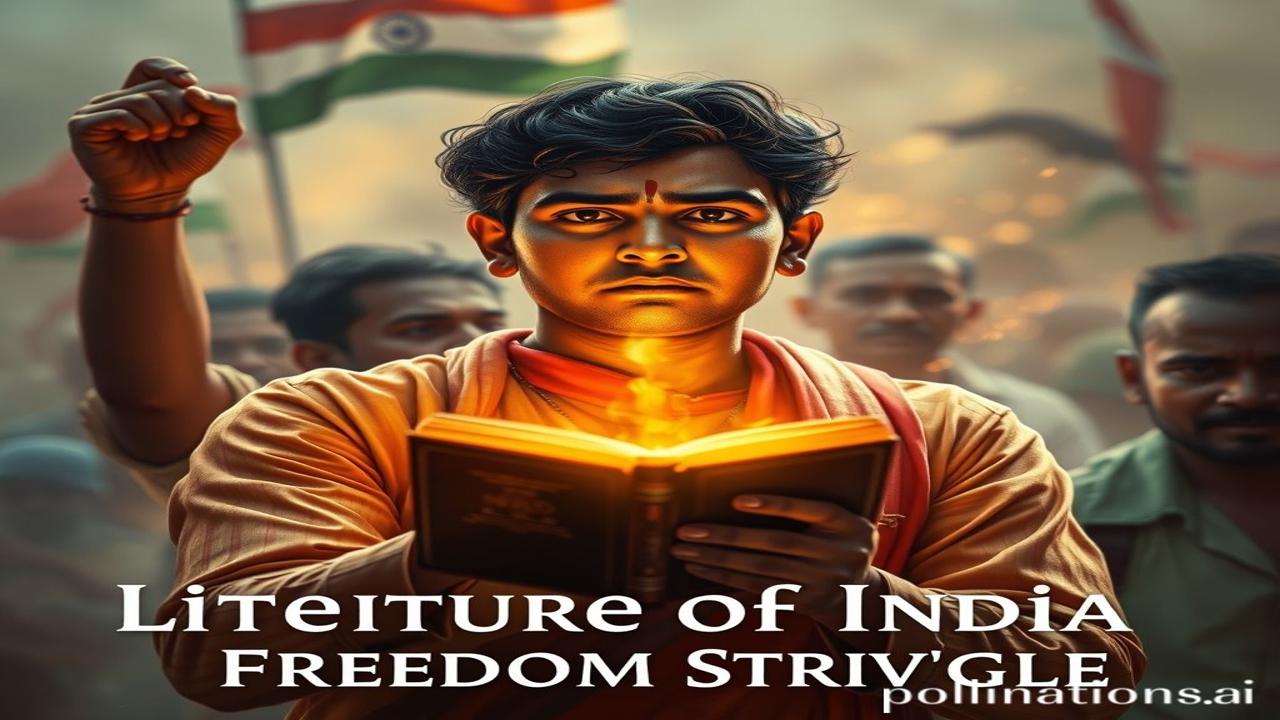Literature of India’s Freedom Struggle: कलम की शक्ति से आज़ादी का सफ़र
Kabhi socha hai, jab bandookon ki goonj aur angrezon ke zulm ka saaya chhaya hua tha, tab kis cheez ne aag lagai thi dilon mein? Woh thi kalam – kalam ki taqat! India ki freedom struggle sirf laathi, bandook aur jail ki kahani nahi hai. Yeh kahani hai un kavitayon ki, un kahaniyon ki, un naatakon ki jinhone logon ko jhanjhora, jagaya, aur unhe azaadi ke liye ladne ki prerana di. Aao, aaj waqt ki dhool hata kar dekhen, iss dharohar ko, jo hamari aatma ka hissa hai.
Bharat Mata Ki Jai! The Context Behind The Ink
India’s freedom struggle was a long and complex period, spanning from the mid-19th century to 1947. This wasn’t just about political battles; it was a battle for the soul of India. During this time, literature became a powerful tool for national awakening. Writers used poetry, prose, and drama to ignite patriotic fervor and challenge colonial rule. Think of Bankim Chandra Chatterjee’s “Anandamath” (1882) with its iconic song “Vande Mataram,” which became a war cry. Or consider Rabindranath Tagore’s powerful poems that spoke of India’s spiritual strength and cultural richness. The impact of these writings was immense. They reached every corner of the nation, transcending barriers of language and caste, uniting people under the banner of freedom. This era gave birth to a literary movement that mirrored and fueled the political revolution. Yeh sirf likhawat nahi thi, yeh desh bhakti ki aag thi!
Zameeni Sach: People, Life, and the Power of Words
Imagine the life of a young farmer in Bengal, struggling under the heavy taxes imposed by the British. He hears a street singer reciting a poem by Kazi Nazrul Islam, filled with passionate words of rebellion. The farmer, who had never held a gun, now feels a surge of courage in his heart. He understands that he is not alone in his suffering. He joins a protest, chanting the poet’s words, his voice filled with newfound conviction.
Or picture a group of women in Punjab, secretly gathering in a courtyard to read aloud stories of brave women who defied the Raj. Their faces, usually hidden behind veils, are now illuminated by the glow of defiance. They realize that they, too, have a role to play in the struggle for freedom.
These are just glimpses into the everyday lives of people who were touched and transformed by the literature of the freedom movement. From the fiery speeches of Mahatma Gandhi to the poignant short stories of Premchand, every word, every sentence, played a part in shaping the destiny of India. “Inquilab Zindabad!” – This slogan, more than just words, became a heartbeat.
Dharohar Aur Pehchan: Echoes of the Past in Today’s India
Today, the echoes of that literary movement resonate in our films, our music, and our collective consciousness. When we sing “Vande Mataram,” we are not just singing a song; we are paying homage to the brave hearts who fought for our freedom. When we read about Bhagat Singh, we are reminded of the courage and sacrifice that defined an era. The stories of our freedom fighters continue to inspire us to stand up for what is right and to build a nation based on justice and equality. Bharatiyata (Indianness) is intertwined with the tales of sacrifice and triumph woven into the literature of that time.
Mazedar Tathya: Did You Know?
Log samajhte hain ki the freedom struggle was only about political movements, lekin asli sach yeh hai ki it was also a cultural and intellectual revolution. Many of the writers who fueled the movement were initially writing in English, but they switched to their native languages to reach a wider audience. This was a conscious decision to connect with the masses and to empower them through the power of their own language. Imagine the sheer determination to choose the language of your people over the language of the rulers!
Drishya Aur Bhavnayein: Sensory Immersion
Imagine the dusty roads of a village in Bihar, the air thick with the smell of wood smoke and earth. You can hear the rhythmic beat of a dhol as a group of villagers gather around a storyteller. The storyteller’s voice rises and falls as he narrates the tale of Rani Lakshmi Bai, her bravery and sacrifice. The villagers listen with rapt attention, their eyes filled with a mixture of awe and determination. The air crackles with a sense of anticipation, of a nation on the verge of change. You can almost feel the energy, the hope, the fear, all swirling together in that single moment.
Antim Vichar: Words as Weapons, Hope as Armor
The literature of India’s freedom struggle is a testament to the power of words. It shows us that even in the darkest of times, hope can endure, courage can prevail, and the pen can be mightier than the sword. As the great Urdu poet Faiz Ahmed Faiz once wrote:
“Bol, ke lab azaad hain tere, bol, zubaan ab tak teri hai…
Tera sutwan jism hai tera, bol ke jaan ab tak teri hai.”
(Speak, for your lips are free; speak, your tongue is still your own…
This straight body is yours; speak, your life is still your own.)
Let us never forget the power of words to shape our world. Jai Hind!
